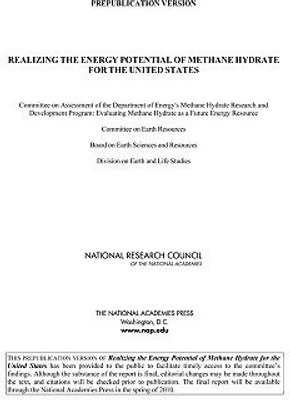Realizing the Energy Potential of Methane Hydrate for the United States(English, Paperback, National Research Council)
Quick Overview
Product Price Comparison
Natural gas, composed mostly of methane, is the cleanest of all the fossil fuels, emitting 25-50% less carbon dioxide than either oil or coal for each unit of energy produced. In recent years, natural gas supplied approximately 20-25% of all energy consumed in the United States. Methane hydrate is a potentially enormous and as yet untapped source of methane. The Department of Energy's Methane Hydrate Research and Development Program has been tasked since 2000 to implement and coordinate a national methane hydrate research effort to stimulate the development of knowledge and technology necessary for commercial production of methane from methane hydrate in a safe and environmentally responsible way. Realizing the Energy Potential of Methane Hydrate for the United States evaluates the program's research projects and management processes since its congressional re-authorization in 2005, and presents recommendations for its future research and development initiatives.Table of Contents Front Matter Summary 1 Methane Hydrate Research in the United States 2 State of the Science: Recent Advances and Current Challenges in Methane Hydrate Research 3 Review of Central Research Efforts Within the Methane Hydrate Research and Development Program 4 Coordinating Process for the Methane Hydrate Research and Development Program 5 Conclusions and Recommendations Appendixes Appendix A: Legislative Authorization Language H.R. 6 - Energy Policy Act of 2005 Section 968. Methane Hydrate Research Appendix B: Committee and Staff Biographical Sketches Appendix C: Presentations to the Committee Appendix D: Comparison of Units of Measurement of Amounts of Methane by Volume and Weight Appendix E: Program Authorizations and Appropriations FY 2000-2010 Appendix F: Project Summary Table


